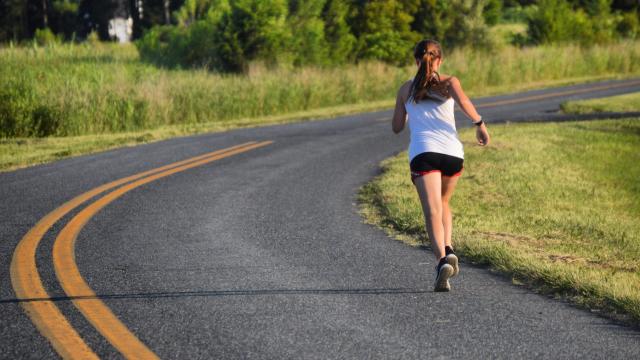It’s time to run (or walk, or otherwise locomote under your own power) one whole kilometre. Then take a break. And if you still have it in you, do it again. That’s right, we’re doing kilometre repeats this week in the Lifehacker Fitness Challenge.
[referenced url=”https://www.lifehacker.com.au/2018/09/this-september-lets-run-or-walk/” thumb=”https://i.kinja-img.com/gawker-media/image/upload/t_ku-large/oxs9otutyuuj4buuf4ak.jpg” title=”This September, Let’s Run (Or Walk)” excerpt=”There’s almost never a bad time to start running — or to get back into it, if you’ve taken a break. We just spent a month trying to stand on our heads, so a little plain old jogging is going to feel great by comparison.”]
The kilometre is such a beautiful distance, in part because we probably all remember a time when “running a kilometre” was a far-off goal. A kilometre? A whole kilometre?
But the more running you do, the smaller kilometres feel. If you run long distances, you’ll find yourself uttering the phrase “only a kilometre” with a sigh of relief (say, 23km into a 24km run).
No matter your experience level, covering 1km always feels like an accomplishment. This week, we’ll aim to cover a solid kilometre in one go. It’s up to you what speed you choose and how many repeats to do. Here’s the process:
- Before you leave home, find a place on this earth that you know measures 1km in distance. That’s two and a half laps around a standard high school track, but if you don’t have a track handy, use something like MapMyRun (registration required) to find the perfect route.
- Warm up. If you’re a beginner, walk (or mix walking and jogging) for about 10 minutes. If not, do a 1km warmup.
- Run a kilometre! (Or walk briskly, if walking is your focus this month.) Choose a pace that feels faster than your usual jog, but not so fast that you burn out before the kilometre is over. Time yourself, if you’re curious.
- Rest, by walking until you catch your breath and feel ready to go again. A good rule of thumb is to walk for the same amount of time you ran.
You’ll have the most fun with this if you don’t run the kilometre at breakneck pace, but instead keep a little fuel in the tank so you can do a second or third rep without feeling like you want to die. Even if you only plan to do one, it’s best to finish with a smile on your face.
(That said, I like to run an all-out kilometre every now and then just as a benchmark. Treat it like a race, and give yourself a rest day afterwards.)
It typically takes 12.5 minutes to walk a kilometre, at a medium-fast pace on flat ground. If you’re a beginner runner, it might take you 10 minutes to jog a kilometre. Intermediate, perhaps seven. The world records for 1km outdoors are 2:11 for men and 2:28 for women, so there’s always room to improve.
So how is the challenge going for everyone? Did you try something different this past week? My change of pace was using a treadmill at the gym for once — I hate treadmills. But I used a Nike Run Club track that guides you through some fast 30-second repeats, and the time flew. How did you shake up your routine this week?

Comments